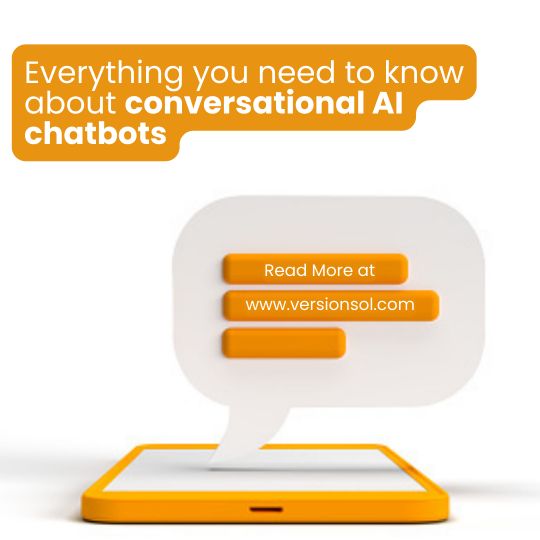In this age of tech innovation companies are using new technologies to interact with clients. Chatbots can assist firms in addressing these ever-changing client needs. However, a common complaint from users who communicate with bots is that they occasionally fail to comprehend the meaning of interactions. This is where conversational AI applications can be used to give chatbots a technological edge and improve their capacity to comprehend and react to natural language. We’ll explain what conversational AI is, how it functions, and various conversational AI applications in this post.
Conversational AI applications use techniques like natural language processing and machine learning to interact with customers effectively. Conversational AI applications are increasingly being adopted by businesses of every size to enhance user experience and process automation. AI is the mind of a chatbot, the logic behind chatbots and voice assistants is enabled by artificial intelligence. It is what enables the bot to guide your consumers toward a particular objective. A chatbot is nothing more than a basic reply without conversational AI.
The importance of conversational AI applications
The use of AI chatbots is expanding as AI becomes smarter and more adept at handling and digesting human conversations. When customers engage with a business digitally, the main focus of customers is to get the answer to their query. They want an effortless, enjoyable experience that is quick, easy, and customized. Conversational AI is undergoing a revolution. Due to the growth of messaging applications and voice-assistance technologies powered by artificial intelligence. In addition to enhancing user experiences, AI can increase sales by facilitating a trustworthy and persuasive selling strategy.
Conversational AI can provide specialized advice and quick assistance to repeated issues. Especially with a better response quality and faster response time which is sometimes quite difficult to achieve with people. Putting it more simply, now companies don’t need to hire employers for customer support. The interactive agent enables businesses to interact with consumers in their native language.
Conversational AI applications by industries
For businesses looking to satisfy consumers, conversational AI is essential. It provides customized, faster, and much more efficient ways to as compared to conventional methods.
Active customer assistance: Conversational AI solutions can significantly reduce the number of humans required to guarantee pleasant customer satisfaction. For a variety of industries, tech insurance, travel, digital health assistance, and much more.
Healthcare services can be more accessible and economical with the use of AI techniques. They can improve a number of administrative procedures, including those that assist patients in submitting claims and receiving payments more quickly.
How do conversational AI works?
DL & ML Model: Plenty of deep learning and machine learning models take over when the application has been ready using NLP. Natural language understanding (NLU) states to a set of methods that allow conversational AI to control the precise meaning of a request. And extract supplementary information to produce the right answers.
Understanding Text intent: The method of mining information from text data is called text study or understanding text intent. Text analysis includes the components of a sentence, including the subject, verb, and object. It also involves identifying vocabulary used in a sentence and other grammar checks.
Quick Response: It’s time to answer the user after completely understanding the request. The system then generates answers through conversation management based on its understanding of the text’s intent. NLP also includes natural language generation (NLG), which arranges the answers and transforms them into human-comprehensible language.
Related: Chatbots and Artificial Intelligence
